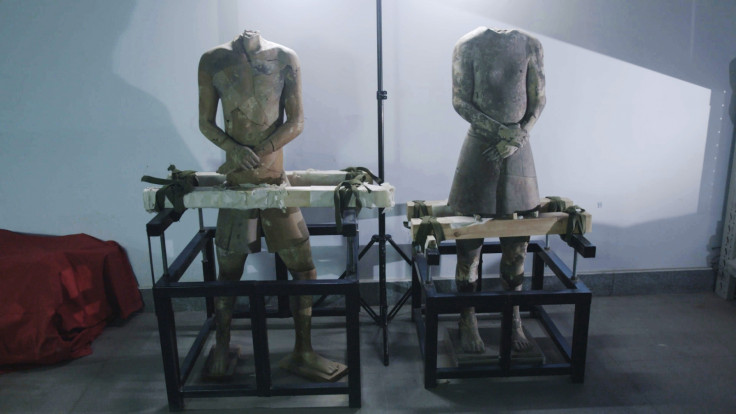Famous terracotta army reveals signs of foreign presence in China before Marco Polo
China's famous terracotta army bears signs of Ancient Greek influence suggesting European presence in China before Marco Polo.
Forty years ago, thousands of life-size terracotta statues of warriors were discovered in China, near the ancient capital of Xianyang. They have fascinated and puzzled archaeologists ever since, for they didn't look like any other artefacts ever found in the country.
Now, it seems that the enigma about what inspired the creation of these statues may soon be solved, The National Geographic reports. Archaeologists have gathered evidence that inspiration for the terracotta army may have come from foreign artists who may have arrived in China, roughly 1,500 years before Marco Polo.
The statues were first discovered by accident. Indeed, in 1974, farmers had been digging a well when they came across the mysterious artefacts. Archaeological work at the site then revealed a huge terracotta army lying at the bottom of three large pits. Further excavations allowed archaeologists to uncover sections of a funerary complex thought to be that of Qin Shi Huang – the First Emperor of China and the founder of the Qin dynasty who lived some 2000 years ago.

Unique statues, individual figures
Perhaps what makes the terracotta figures so interesting is their uniqueness: each statue is life-size and individually modelled in clay with great care and attention to details. Each head is thought to be different for each warrior. This type of artwork had never been found elsewhere in China, so archaeologists had for years tried to find clues regarding the origins of these statues.
In a new documentary called China's Megatomb Revealed, due to air on National Geographic Channel on Sunday 16 October, researchers share their discovery of terracotta acrobats and of little bronze figurines of ducks, swans, and cranes at the site, which they see as signs of cultural influence from ancient Greece.

Indeed, these figurines were made with a lost wax casting technique in use in Ancient Greece and Egypt – which involved using a hollow clay-cast made by creating a wax mould, surrounding it with clay, and then melting the wax.
This suggests that foreign artists could have been present when the terracotta army was created, long before Marco Polo's historic journey eastwards.
This idea was backed up further by the fact the experts recovered European DNA from skeletons found buried close by. Mitochondrial DNA samples revealed that individuals of European descent had probably settled in China and had been contemporaries of its First Emperor. The fact that the two cultures were in contact so early on is astonishing, and has been described as the most important archaeological find at the site in the last four decades.
© Copyright IBTimes 2024. All rights reserved.







